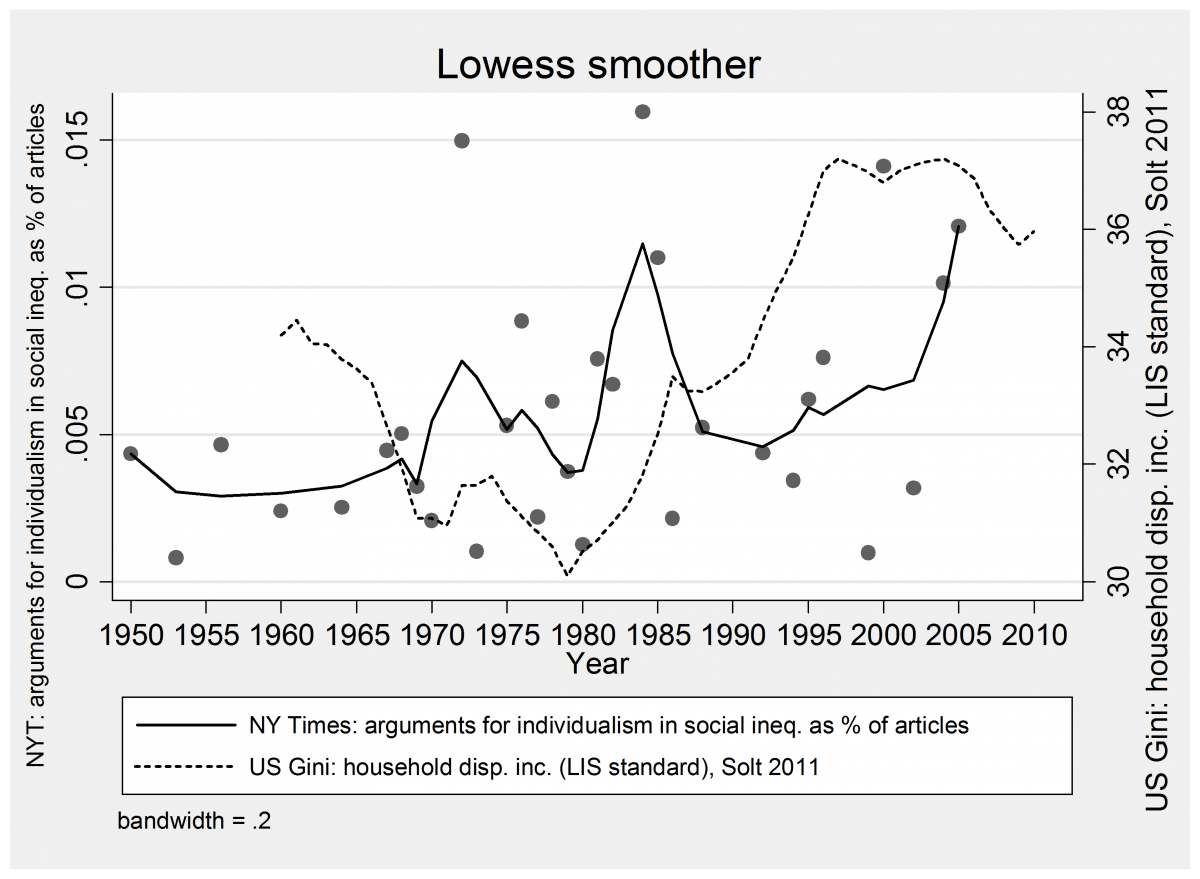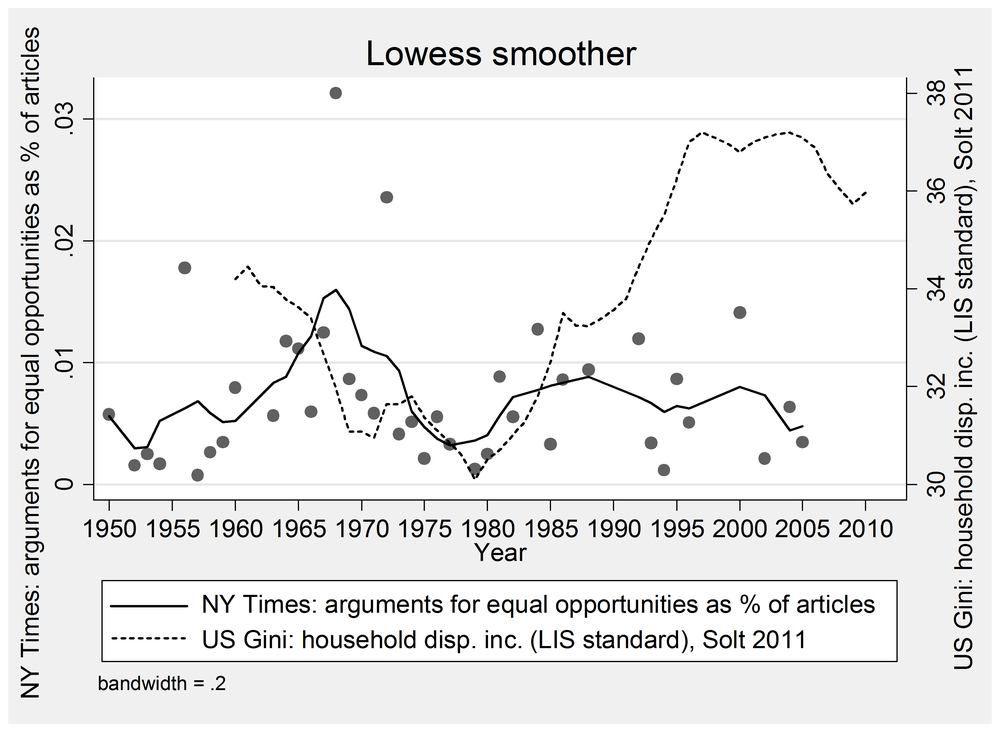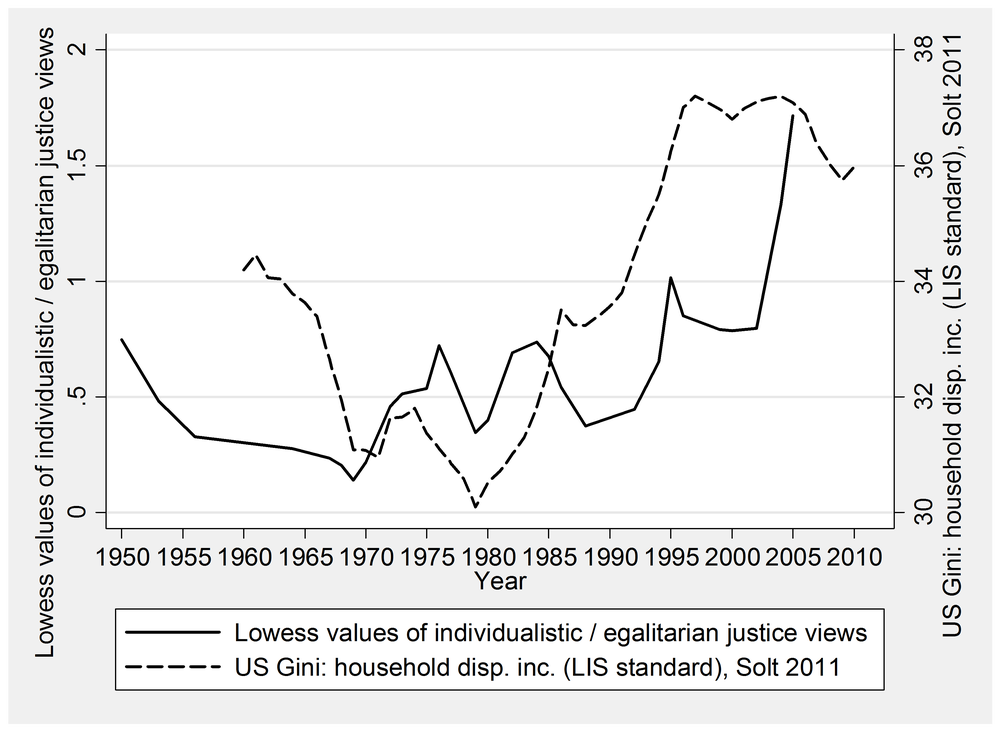Hey there,
I thought I would let you in on my newest research results. I wanted to know how, with increasing social inequality, conceptions of ‘fair’ social inequality have changed? I will show you in the following, how justice norms in the media have changed from favoring a more egalitarian distribution of incomes to favoring more social inequality.
In order to understand this, I have looked at changes in income inequality and I have read 600 articles that appeared in the NY Times since 1950 and that contained the search terms ‘income* social* equal* justice poverty.’ Thus, I looked at all articles that make reference to incomes, social matters, equality justice and poverty. I have then coded the statements in these articles according to two types of statements. Statements that in one way or another argue for more social inequality I have given then code ‘individualism.’ For example, the following statements reflect the code ‘individualism’:
1) Social inequality results from merit and should thus not be reduced.
2) One has no right to take from individuals to redistribute to others.
3) Redistribution has to be avoided as it destroys individual responsibility and / or freedom.
4) Inequality is economically productive
5) Redistributive spending is wasteful.
6) Redistributive spending creates dependent or unemployed recipients.
Statements that have argued in one way or another against more social inequality I have given the code ‘egalitarianism.’ For example, the following statements have been given this code:
1) Basic needs must be met for everyone.
2) Public investments should create good jobs for everyone.
3) Social equality is economically productive.
4) People have human rights to social transfers and social protection.
5) Wealthy people should pay disproportionately more than poorer ones.
6) Everyone should own property / have wealth.
I have written down guidelines in a codebook as to when assign what code and with the help of this codebook, myself and a student were able to code articles with the same justice views in about 80 percent of the cases. So what justice view is assigned to what article is not a matter of subjective opinion – even if some of this can never be entirely ruled out.
So what are the results? The dots in the following Figure shows how many statements I found in the NY Times that argued in favor of elevated social inequality, divided by the number of all articles in the NY Times of the same year. I have used a locally weighted scatter plot smoothing regression, which uses 20 percent of the available data around each point, to estimate a curve that fits the long run trend in how often this justice view has been found per year (solid line). Finally, the dashed line shows the Gini of the relevant year and therefore shows income inequality.

As one can see, statements in favor of more social inequality were very rare before the 1970s, at a time when social inequality was actually low. They increased when social inequality was very low in the 1970s.
What about the opposite view, how often can we find ‘egalitarian’ statements that argue for a more equal distribution of incomes? The following Figure shows this, using the same methods.

As you can see, arguments for a more equal distribution of income were very prevalent at the end of the 1960s, but have declined since then. Another way to show how arguments in favor of more social inequality have overpowered arguments in favor of less social inequality is to graph how many individualistic arguments existed each year, divided by the average number of egalitarian arguments per year. The following Figure shows this curve as well.

As one can see, while individualistic arguments were consistently less than egalitarian ones (measures of less than 1 on the left y-scale), between 2000 and 2005, there are more statements arguing for more social inequality than statements arguing against it. This all happened when social inequality increased.
The point I am trying to make is simple: The increase of social inequality in the US could happen in the shadow of changing statements what is seen as socially just. While arguments in the 1960s mainly argued for more social equality, statements later on argue for more inequality.
